In recent years, the need for an integrated marketing approach has significantly redefined the role of Public Relations (PR), making it crucial to strategic communications.
While advertising highlights your services, PR makes other consumers sing your praises – it effectively and authentically reinforces the brand message to a target audience.
According to a 2014 study by Nielsen that was commissioned by inPowered, PR is 90% more effective than advertising.
But running a PR agency is more than just corporate know-how.
To bring your agency to life, you must devise a comprehensive marketing plan, determine your business model, and much more.
Below, you’ll learn everything you need to know about starting a PR agency.
TL;DR – How to Start a Public Relations Firm
Brands and enterprises always look for innovative ways to grow their reputation and digital presence. They employ PR agencies to handle media coverage and take appropriate measures.
Essentially, PR agencies manage communications between a brand or business and the media. They integrate various strategies to share news about a brand to increase loyalty and visibility on and off-screen.
In this guide, you’ll find relevant support for starting your own agency in Public Relations.
But if you’re short on time, here’s the information you need:
- Plan and create your PR agency
- Register your company and bank account
- Manage your PR firm successfully
- Get clients and develop your business
- Prioritize professional development
If you need help addressing operational bottlenecks, creating strategic roadmaps, and maximizing business earnings, schedule a free agency assessment with Prospecting On Demand.
 Legal Considerations Before Starting a PR Firm
Legal Considerations Before Starting a PR Firm
PR firms must know their legal rights and obligations, especially those relevant to their workplace activities. It helps ensure compliance and avoid liabilities.
Here’s what you need to do first.
Choose a Business Structure For Your PR Agency
To address legal obligations, you should register your company and settle on a business structure that best suits your goals.
- Sole Proprietorship: Owned by a single entity that’s responsible for paying taxes, sole proprietorship is ideal when capital is low, and you want to focus most of your resources on client acquisition.
- Partnership: A partnership structure refers to shared ownership between you and one or more business partners. This means the liability, workload, investment, and profits are divided between multiple shareholders.
- Limited Liability Company: The Limited Liability Company (LLC) structure is flexible and grants limited protection under most circumstances. It allows you to submit the business income as part of your personal income taxes.
- Corporation: A corporation, or C corp, is a separate legal entity from its owner/s, and they file separate income taxes for profits achieved annually. This structure offers maximum personal protection from liabilities.
Ensure Compliance With Essential FCC Regulations
Federal Communications Commission is an independent U.S. government agency assigned to oversee interstate and international communications.
The government body maintains compliance and consistency among types of media and their channels of communication while protecting consumer rights and interests.
Any PR firm operating in the United States may need to comply with the standard regulations set forth by the Federal Communications Commission (FCC) for services like:
- Radio broadcasting
- Telecommunications
- Wireless and internet
- Sponsorship identification
- Emergency alert systems
 How Much Capital is Required to Start a PR Firm?
How Much Capital is Required to Start a PR Firm?
Starting a PR agency may require different levels of capital, although this depends on the type of business structure you have, the scope of services being offered, and more.
The average cost of starting a PR firm in the U.S. averages somewhere between $27,000 to $115,000.
Note that these amounts are an average estimate and can vary depending on factors such as:
- Company location
- Company structure
- Services offered
- Technical requirements
- Brand development
It’s best to carefully assess these factors and then draw out a detailed business plan that incorporates all costs before you even reach an estimate.
 How to Start a PR Firm in 5 Steps
How to Start a PR Firm in 5 Steps
Running a full-circle PR agency will force you to adopt multiple roles, from accounts to sales and business development. While you don’t need to be a superstar in every vertical, you must learn the basics.
If you think you already have what it takes to run a successful PR agency, here’s how you can start.
STEP 1: Plan and Create Your PR Agency
When planning the foundation of your business, you always start with research and then move on to development, which includes:
- Determining brand positioning: Find out everything you need about your industry, competition, and target audience. You can collaborate with marketing experts and business owners at networking events to discuss market trends or contact your peers to establish connections.
- Defining your target industry: Target and develop a steady client base that best caters to your business goals. The kind of clientele you want to service must align with your company’s background and industrial expertise. You can provide specialized services for your clientele.
STEP 2: Register Company and Bank Account
Once you have settled on a brand name, you should cater to all your legal obligations, like:
- Determining a legal representation: Establish the type of business structure you want to consider for the PR agency so you can address essential components, like tax and other personal liabilities.
- Fulfilling state and federal tax obligations: Consult a reliable CA to declare your tax income and financial performance. You should also check the relevant state and federal tax laws.
- Opening a business bank account: Register a business account to ensure regulatory compliance and financial professionalism. It also simplifies auditing processes by ensuring financial transparency.
STEP 3: Manage Your PR Firm Successfully
Now that you’ve set up your PR agency, the next step is streamlining operations by:
- Creating a website for your brand: Establish a website to position your brand and services online. It will allow for more exposure and visibility. It enables your target audience to find you at their convenience.
- Leveraging technology for your firm: Invest in innovative tools and software to run your digital PR agency. This practice allows you to automate workflow and monitor operations without wasting any time.
- Establishing work culture and workforce: Develop an inclusive and collaborative work environment with dedicated strategies to build agency culture. Invest in employee training and recognition to foster their growth.
 STEP 4: Ensure Effective Business Development
STEP 4: Ensure Effective Business Development
Though PR professionals acquire leads through networking, digital marketing, and cold outreach, they often face challenges when looking for clients.
But you can enhance client acquisition efforts by:
- Marketing your expertise on social media: Some 33% of PR professionals use social media daily for external communication. The practice helps agencies connect with potential leads or prospects.
- Niching down your target audience: Provide specialized services for niche audiences to foster better client relations. This focused approach will boost your credibility by maximizing your resources to deliver a higher ROI.
STEP 5: Prioritize Professional Development
PR firms that lack professional expertise may encounter problems like mismanaged client relationships, ineffective communication systems, and non-compliance.
It’s essential that you keep capital aside for:
- Developing the internal workforce: Train your staff on the latest PR strategies to meet industry demand. Through internal training and development, you also ensure regulatory compliance.
- Investing in strategic agency partnerships: Partnering with professional experts will help you scale your business to 7 figures and beyond. Here’s where you can explore the mentoring programs of Prospecting On Demand.
 What Does a PR Firm Do? Services Explained
What Does a PR Firm Do? Services Explained
According to the Public Relations Society of America (PRSA), “Public relations is a strategic communication process that helps build mutually beneficial business relationships between an organization and the public.”
Some common services offered by PR agencies include:
- Media relations management: Fostering relations with media outlets and journalists to optimize press coverage and manage negative publicity.
- Press release writing and distribution: Sharing news about a brand or making the public aware of any events by crafting unique press releases.
- Crisis management and risk analysis: Developing strategies and swift responses to handle bad publicity and protect client reputation.
- Content creation, editing, and delivery: Creating content for all social media channels (including the website) to maintain online reputation.
- Event management and networking: Planning and executing networking events, like press conferences and product launches, to generate publicity.
- Reputation management and monitoring: Tracking and addressing reviews from different stakeholders to improve the brand’s reputation.
- Corporate communication services: Developing and integrating communication strategies to ensure positive relations with media and the public.
Do you want to accelerate your business skills?
Explore these mentoring programs with us at Prospecting On Demand, led by industry experts and designed specifically for agency owners like you.
 How to Price Your Services
How to Price Your Services
PR agencies tailor their services to meet the needs of their target audience, including business goals and public demands.
However, pricing these services can be challenging when there are dependencies like the company’s current reputation, size, scope of services, competitive landscape, the client’s industry, and more.
Here are a few steps you can consider:
- Choose a pricing model: Explore various pricing options like hourly rates, retainer fees or project-based pricing, tiered pricing, and more. For instance, set an hourly rate for a PR consultation.
- Tailor pricing to the client’s needs: Align your services with a client’s needs by setting clear expectations, seeking feedback, and integrating a trusted implementation process.
- Identify USPs, costs, and overheads: Define your USPs, company costs, and overheads before determining the profit margin that you aim to achieve through your pricing model.
- Align pricing with performance metrics: Calculate the pricing based on the outcomes achieved to demonstrate the value of your service or to incentivize results.
How to Structure a PR Agency
The primary goal of any PR agency is to build a positive public image for their brand and achieve communication objectives effectively.
And many types of PR agencies structure their operations, resources, and in-house staff by:
- Defining the company vision and goals
- Establishing a company legal structure
- Identifying niche audiences and services
- Building and developing an expert PR team
- Establishing internal processes and systems
- Creating a pricing strategy for the clients
- Monitoring and adapting service offerings.
 How to Get PR Clients
How to Get PR Clients
While PR agencies aim to improve a brand’s public image and reputation, securing these clients can be challenging.
Here are some effective solutions:
- Post thought leadership content: Create valuable and thought-provoking content that captures your brand voice and ensures topical authority.
- Foster connections on LinkedIn: Search for prospects on LinkedIn using filters and engage with them in groups to expand your network of contacts.
- Implement a referral program: Offer incentives to your clients and other contacts so they bring in new prospects as part of a referral program.
- Customize your business pitch: Craft an engaging agency pitch highlighting strategic prowess and your ability to deliver impactful results.
- Leverage agency tools and software: Unlock your PR agency’s true potential by integrating technology to meet client demands and industry trends.
- Organize all types of pitching events: Host workshops and offer free consultations to showcase your expertise, highlight achievements, and build credibility.
 How to Differentiate Your Firm from Competitors
How to Differentiate Your Firm from Competitors
To differentiate your PR firm from competitors in the market, here are some strategies you can adopt right away:
- Specialize in a niche that addresses a particular industry or type of client, like providing PR services to tech companies and startups.
- Provide a unique value proposition that clearly sets you apart from the competition, like highlighting your track record of success.
- Offer innovative services through resources like proprietary analytical tools, digital PR campaigns, influencer marketing, and more.
- Develop a strong branding message that remains consistent across different media platforms and reflects your company’s values.
- Ensure exceptional client service with a responsive, proactive, and problem-solving customer support team to meet client needs.
- Deliver outreach programs to industry associations and involve the local community to raise your company’s reputation.
 Pros and Cons of Starting a PR Firm
Pros and Cons of Starting a PR Firm
Starting a PR agency comes with its set of challenges and opportunities. Below, we explore the advantages and drawbacks of establishing a PR agency.
Advantages
- Scalability options: PR firms are scalable businesses, so you can implement different business models and pricing tiers to accommodate new clients.
- Positive brand image: PR firms shape a positive brand image by developing strategies to prompt positive discussions between the media and the public.
- Increased media outreach: PR agencies foster good dynamics with media agents and journalists to ensure your brand maintains a healthy reputation.
Disadvantages
- Highly competitive market: The PR industry is competitive, with companies vying for the same clients, thus making it difficult to penetrate new markets.
- Longer sales process: The conversion funnel for most PR firms is lengthy and tedious, especially when working with a small sales team.
- Unguaranteed results: PR efforts are difficult to measure as they depend on third-party endorsements from media channels and journalists.
Conclusion
Starting a PR agency is a rewarding venture that requires careful planning, monitoring, and execution.
But you have to adapt the business to industry trends.
With Prospecting On Demand, you can explore personalized mentoring programs that are agency-specific to ensure better performance and long-term success.
You can also grab networking opportunities by joining our diverse community of seasoned agency owners on Facebook.










